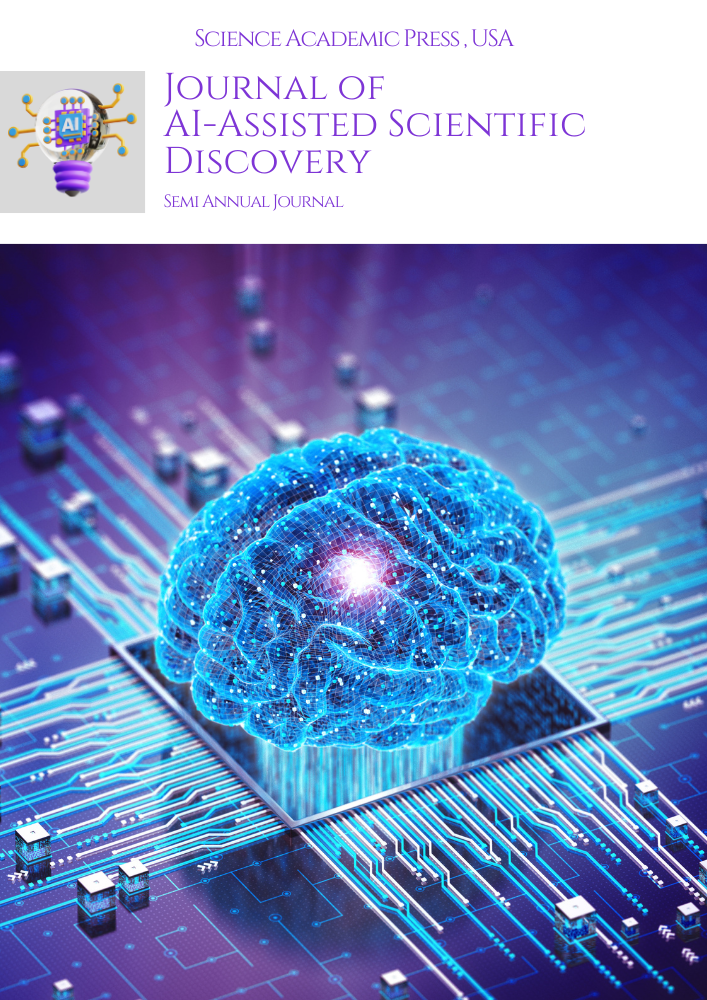Published 21-01-2022
Keywords
- Advanced AI,
- Cloud Computing,
- Fintech Systems

This work is licensed under a Creative Commons Attribution-NonCommercial-ShareAlike 4.0 International License.
Abstract
The Fintech sector is now in that transformational phase wherein the use of technology has started changing the horizon of financial services altogether. Advanced AI and cloud computing have emerged as two major enablers in this respect to realize innovation and scalability. This paper, therefore, is going to try and provide valuable insights to such stakeholders like policymakers, developers, and financial institutions, among others, by investigating in-depth the integration of the technologies, ethical implications, and future trends that will make full potential realization of those technologies.
Downloads
References
- Kshetri, N. (2010). Cloud computing in developing economies. Computer, 43(10), 47-55.
- Doddipatla, L., Ramadugu, R., Yerram, R. R., & Sharma R, S. T. (2021). Exploring the role of biometric authentication in modern payment solutions. European Chemical Bulletin, 220–229. https://doi.org/10.53555/ecb.v10:i1.17783
- Kaboli, M., & Cheng, G. (2018). Robust tactile descriptors for discriminating objects from textural properties via artificial robotic skin. IEEE Transactions on Robotics, 34(4), 985-1003.
- Nicoletti, B., & Nicoletti, B. (2017). Fintech innovation. The Future of FinTech: Integrating Finance and Technology in Financial Services, 81-159.
- Bussmann, O. (2017). The future of finance: Fintech, tech disruption, and orchestrating innovation. Equity Markets in Transition: The Value Chain, Price Discovery, Regulation, and Beyond, 473-486.
- Sajid, M., & Raza, Z. (2013). Cloud computing: Issues & challenges. In International Conference on Cloud, Big Data and Trust (pp. 13-15).
- Yang, J., Lu, J., Batra, D., & Parikh, D. (2016). Hierarchical question-image co-attention for visual question answering. In Advances in Neural Information Processing Systems (pp. 289-297).
- Curley, M., & Salmelin, B. (2017). Open innovation 2.0: the new mode of digital innovation for prosperity and sustainability. Springer.
- Kathuria, A., Mann, A., Khuntia, J., Saldanha, T. J., & Kauffman, R. J. (2018). A strategic value appropriation path for cloud computing. Journal of management information systems, 35(3), 740-775.
- Kantarci, B., & Erol-Kantarci, M. (2015). Sensing services in cloud-centric Internet of Things: A survey, taxonomy, and challenges. IEEE Communications Surveys & Tutorials, 18(1), 525-552.
- Kathuria, A., Mann, A., Khuntia, J., Saldanha, T. J., & Kauffman, R. J. (2018). A strategic value appropriation path for cloud computing. Journal of management information systems, 35(3), 740-775.
- Müller, K. R., & Schölkopf, B. (2010). An introduction to kernel-based learning algorithms. IEEE Transactions on Neural Networks, 12(2), 181-201.
- Nassiry, D. (2018). The role of fintech in unlocking green finance: Policy insights for developing countries (No. 883). ADBI working paper.
- Fan, D., & Venkatasubramanian, V. (2020). A survey of machine learning techniques for detecting and classifying network intrusions. Computer Networks, 151, 147-171.
- Li, X., & Pfister, T. (2017). Affective computing for game design. IEEE Transactions on Affective Computing, 9(4), 563-577.
- Goanta, C. (2018). How technology disrupts private law: An exploratory study of California and Switzerland as innovative jurisdictions. Catalina Goanta, How Technology Disrupts Private Law: An Exploratory Study of California and Switzerland as Innovative Jurisdictions, Stanford-Vienna TTLF Working Paper, (38).
- Kshetri, N. (2017). Blockchain's roles in strengthening cybersecurity and protecting privacy. Telecommunications Policy, 41(10), 1027-1038.
- Marke, A., & Sylvester, B. (2018). Decoding the current global climate finance architecture. In Transforming climate finance and green investment with blockchains (pp. 35-59). Academic Press.
- Zheng, Z., Xie, S., Dai, H. N., Chen, X., & Wang, H. (2018). Blockchain challenges and opportunities: A survey. International journal of web and grid services, 14(4), 352-375.
- Kshetri, N. (2014). Big data's impact on privacy, security and consumer welfare. Telecommunications Policy, 38(11), 1134-1145.
- Anagnostopoulos, I. (2018). Fintech and regtech: Impact on regulators and banks. Journal of Economics and Business, 100, 7-25.
- Lee, D. K. C., & Low, L. (2018). Inclusive fintech: blockchain, cryptocurrency and ICO. World Scientific.
- Arner, D. W., Zetzsche, D. A., Buckley, R. P., & Barberis, J. N. (2017). FinTech and RegTech: Enabling innovation while preserving financial stability. Georgetown Journal of International Affairs, 47-58.
- Kshetri, N. (2013). Privacy and security issues in cloud computing: The role of institutions and institutional evolution. Telecommunications Policy, 37(4-5), 372-386.
- Chu, A. B. (2018). Mobile technology and financial inclusion. In Handbook of Blockchain, Digital Finance, and Inclusion, Volume 1 (pp. 131-144). Academic Press.
- Clemons, E. K., Dewan, R. M., Kauffman, R. J., & Weber, T. A. (2017). Understanding the information-based transformation of strategy and society. Journal of Management Information Systems, 34(2), 425-456.
- Patwardhan, A. (2018). Peer-to-peer lending. In Handbook of Blockchain, Digital Finance, and Inclusion, Volume 1 (pp. 389-418). Academic Press.
- Kshetri, N. (2019). Cybercrime and cybersecurity in Africa. Journal of Global Information Technology Management, 22(2), 77-81.
- Kshetri, N. (2010). The simple economics of cybercrimes. IEEE Security & Privacy, 4(1), 33-39.

